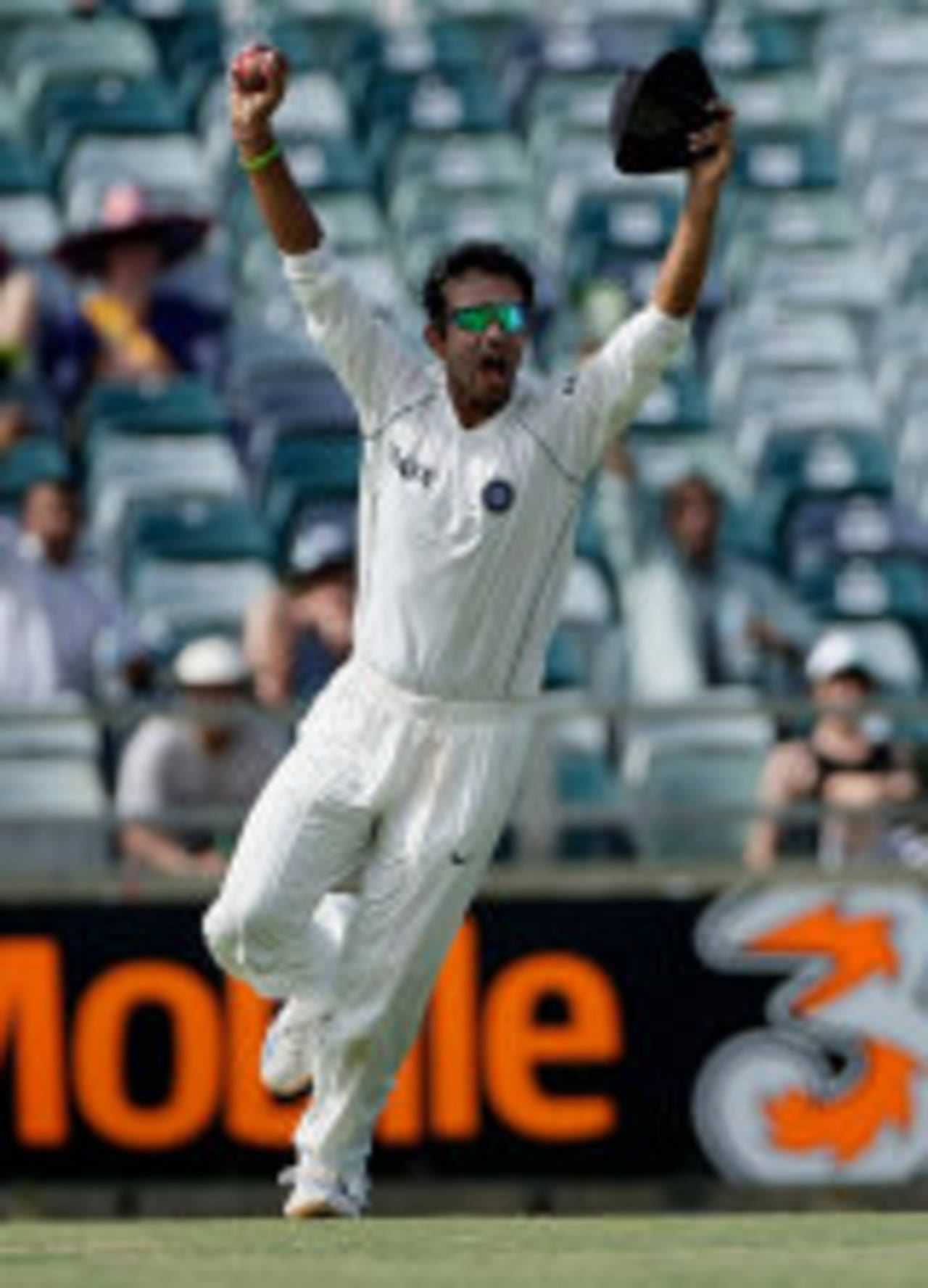Two gaping holes
When Rahul Dravid quits, he will leave behind two gaping holes - one in the middle order as a batsman of the highest class, and one at slip as the best India have produced
Suresh Menon
25-Feb-2013

Getty Images
Mark Waugh, holder of the Test record with 181 catches, said he hoped Rahul Dravid made a pair in the Mohali Test and would be dropped for the rest of the series, and presumably forever. Dravid, in case you are wondering why Waugh should be so unkind, has 176 catches, and should soon overtake the Australian.
There might be debates over who the greatest Indian batsman is, or which of the spinners deserves to be No. 1. But one such assertion is beyond argument - that Dravid is the greatest slip fielder we have had. And in keeping with both with the character of the game and the character of the man himself, it is not something that has used up column inches in newspapers or whatever it is that is used up in cyberspace.
Dravid is not a flashy catcher at slip - his anticipation gets him into position quickly and there is no need for desperate lunges or dramatic dives - but few edges go past. He is superbly balanced, focused and a study in the art of positioning, especially against the spinners. That 97 of his catches have come off the Anil Kumble-Harbhajan Singh combination underlines the effective role he has played in the careers of India’s two most successful spinners. With minimum fuss, as always.
In their early years in Test cricket, India had the occasional outstanding fielder in the covers - Lall Singh ran out Frank Woolley in India’s first Test in 1932, to reduce England to 19 for 3 at Lord’s - but few reliable catchers close-in. The slips were a safe haven for the slow-moving or those approaching retirement, and if the edges were kind, then the catches stuck.
It wasn’t until Tiger Pataudi took over as captain and laid special emphasis on fielding that the specialists emerged. There was Ajit Wadekar at slip, Chandu Borde, and later S Venkataraghavan at gully, and those two superb catchers, Abid Ali and Eknath Solkar at short leg. Sunil Gavaskar and Gundappa Viswanath joined the group at slip.
Since then, India have had effective catchers - Gavaskar finished with 108 catches, and towards the end of his career was more keen to get to that century than any other. Mohammed Azharuddin had 105, and he was brilliant. Not all of V V S Laxman’s 105 catches were taken at slip. Before this series is done, Tendulkar will join their ranks - his tally before Mohali stood at 98.
There is something special about Dravid at slip. In the one-day game, he was happy to stand wider than normal, but in Tests he is the orthodox fielder, taking his bearings from the batsman and the extension of the return crease. As a catcher he is more in the Mark Taylor mould, brilliant without being flamboyant rather than in the mould of a Mark Waugh, who too was exceptional and didn’t care who knew it.
For all its obsession with figures, there is no reliable method among statisticians of the game to include such things as catches dropped or boundaries conceded in a fielder’s figures. What percentage of the catches coming to them did they actually latch on to? Great catchers drop some too, but the percentage is almost insignificant.
Dravid can take heart from Waugh’s concern over the record. But we need to remind ourselves that when he quits, he will leave behind two gaping holes - one in the middle order as a batsman of the highest class, and one at slip as the best India have produced.
Suresh Menon is a writer based in Bangalore